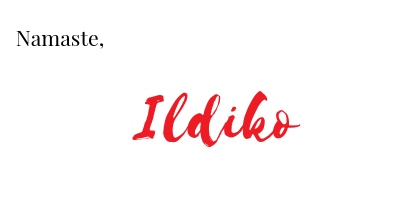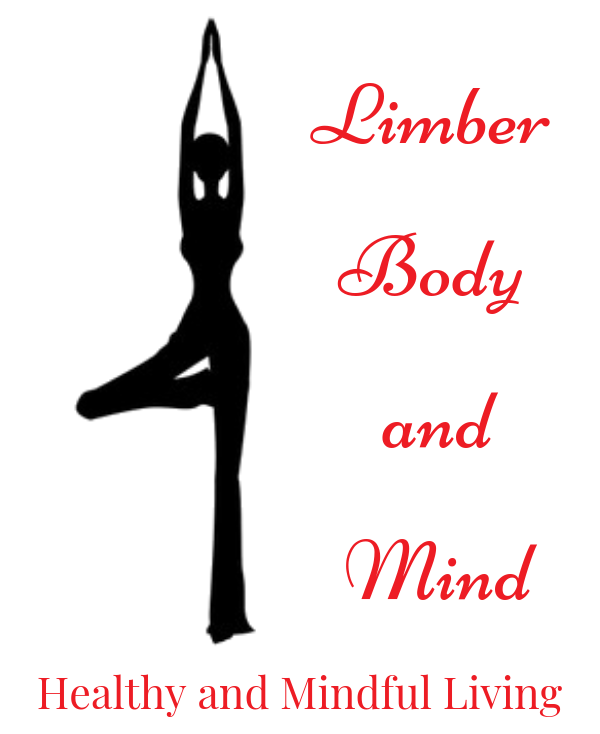As a yoga instructor, self-care has been a hot topic since I have started teaching. The unprecedented times of staying at home due to the coronavirus pandemic amplified the need to combat stress and anxiety more than ever before. Today, I would like to focus on breathing, journaling, and mantras as a way to cope with fear, anxiety, and uncertainty.
Breathing
Pranayama practices are yogic breathing exercises and have a long history in Ayurvedic medicine and yoga. Alternate Nostril Breathing, or Nadi Shodhana Pranayama in Sanskrit, is a simple yet powerful technique that can calm the central nervous system, restore balance, ease tension in the body, and anxiety of the mind. Nadi means channel or flow, and shodhana means purification.

Besides reducing anxiety, here are a few other benefits of this exercise:
– Infuses the body with oxygen
– Clears and releases toxins
– Calms and rejuvenates the nervous system
– Supports clear and balanced respiratory channels
– Fosters mental clarity and an alert mind
– Enhances the ability to concentrate
– Brings balance to the left and right hemispheres of the brain
To practice Alternate Nostril Breathing, do the following:
- Sit in any comfortable position. Close your eyes.
- Allow your body to relax and the breath to settle naturally for a few moments.
- Place your left hand on your left knee.
- Lift your right hand, make a peace sign, and fold the two extended fingers towards your palm.
- Exhale completely, and then use your right thumb to close your right nostril.
- Inhale slowly, deeply, smoothly through your left nostril, then close it with your ring and little fingers.
- Release closure of your right nostril and exhale through the right side.
- Inhale through the right nostril, then close this nostril.
- Open the left nostril and exhale through the left side. This is one cycle.
- Inhale again through your left nostril, continue for up to 5 minutes, finishing with an exhale on the left side.
- After completing the practice, relax both arms, sit and breathe naturally for a few moments. Finally, open your eyes.
Please note, this breathing technique is not suitable for everyone. You should not practice pranayama if you have a heart condition, fever, lung congestion, headache, or psychological disorder. If you are pregnant or undergoing chemotherapy or radiation, please seek guidance from your medical professional.
Journaling
I am not a mental health professional but putting your thoughts and feelings on paper, and allowing your writing to be an outlet, may serve you well during uncertain times.
Here are some reasons or times you may find journaling helpful:
– to find quiet time and peace,
– to strengthen your relationship with yourself,
– for stress reduction and as a way to work through anxiety,
– to bring awareness to the present moment,
– to facilitate emotional healing,
– for problem-solving.

Simple steps to start:
1. Get a pen and paper, nothing fancy, or sit down in front of your computer.
2. Dedicate 10-15 minutes a day and start writing.
3. Jot down your thoughts, your feelings, your worries, and your fears. Describe the events that caused you to feel this way.
4. You may choose to record flow-style, or you may find that a framework of questions, a template-style, is more suitable. I tried both ways, and I found that allowing my thoughts just to come out is the better method for me.
5. If you find that nothing comes to mind when you sit down, enjoy the nothingness, or use this time to contemplate and meditate.
6. Once you put down how you feel, try to elaborate on what will happen next. Also, how it would affect you. This part is stressful; facing your real fears is never easy.
7. And most importantly, don’t judge what you have written.
Below are questions/suggestions (some of these I have also used) that may get you started if you are looking for more of a structure:
1. What happened? (event, people, the location that was a trigger for stress)
2. How did this affect me or make me feel?
3. How did my surroundings react to what happened?
4. What can I change about the situation? Action items:
5. What can I NOT control? Things to let go:
There is no right or wrong in journaling. Be honest, however, because this is how you discover what you need. When everything around you starts to become overwhelming, all you have to do is to write down your thoughts. Then read them, sit with them, surrender to them. In this process of letting go, a solution for coping with fear, anxiety, and uncertainty will appear, and you will feel lighter.
Mantras
Chanting positive affirmations or mantras is a great way to calm the mind. A mantra is a positive phrase or statement that you use to inspire yourself to be your best or a way to live your life.
How to use mantra in your daily routine to combat anxiety?
Find a comfortable place to practice! Begin by lying down or sitting in a comfortable position! Close your eyes, then bring your awareness to your breath! Silently, repeat your mantra ten times! As you get more comfortable, set aside 10 to 20 minutes a day to practice. In other words, the more you practice, the easier it gets, and the more you will benefit from its compounding effects.

Examples:
I inhale health and exhale fear.
I am strong and resilient.
All things are temporary.
I love myself, and I am surrounded by love.
I will let go of things I cannot control.
If you are interested in mantras, you may find one of my earlier posts, 10 Intentions for Your Yoga Practice, a valuable read. Similarly to mantras, setting intentions are powerful, and they can act as an inspiration or motivation for your day.



